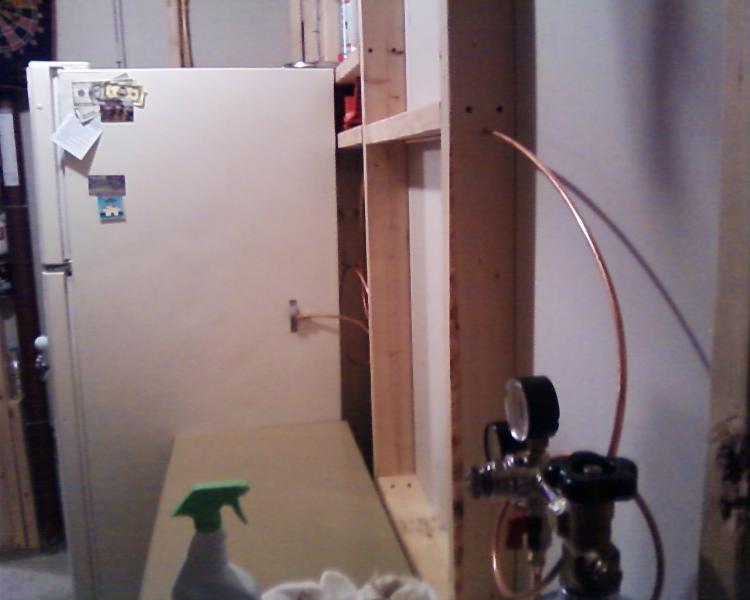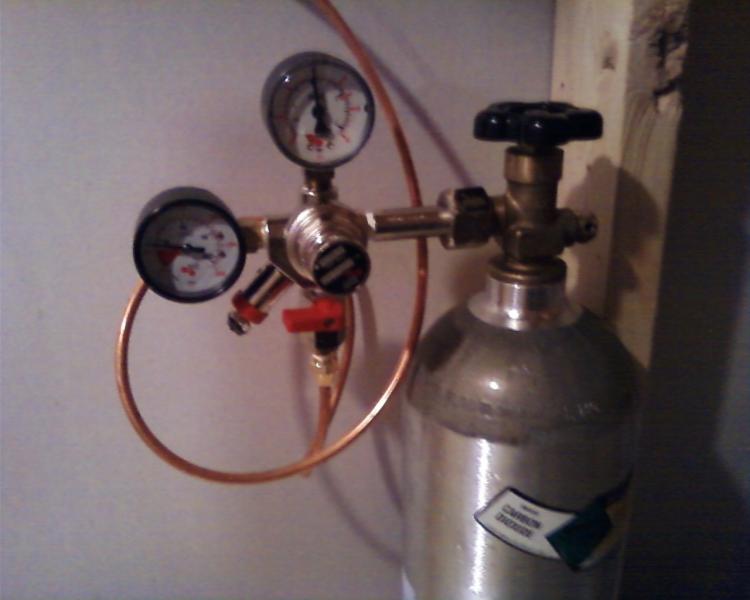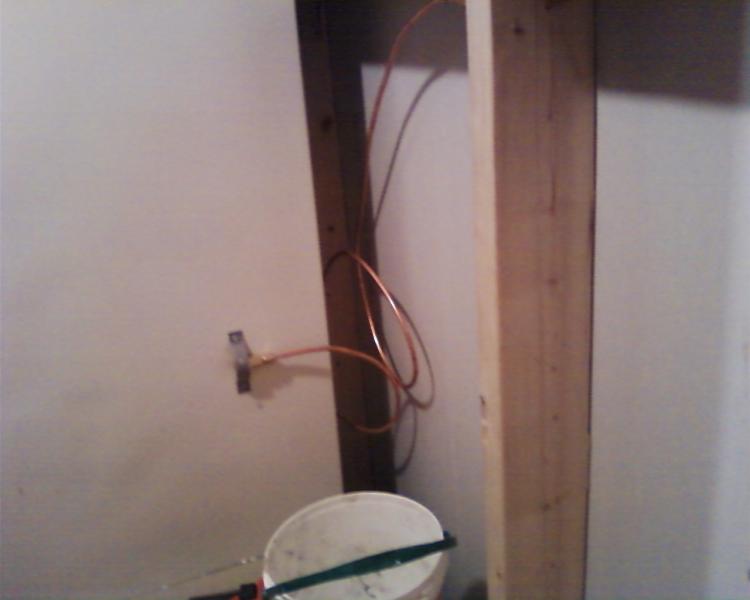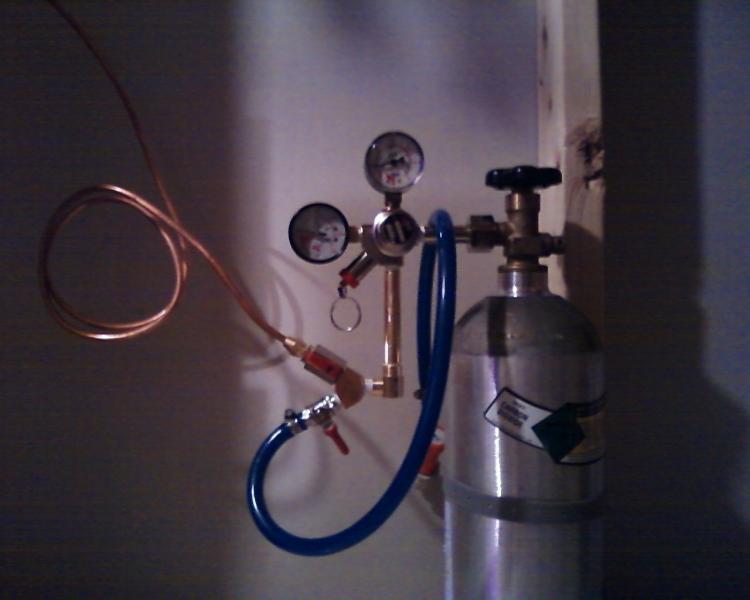TheBroonery
Well-Known Member
I Decided to undertake the project of moving the CO2 tank out of the beer fridge. Since the fridge is tucked in between a wall and 2 stacked drawer units, there is nowhere convenient less than 4' away from the fridge to put a tank. So I ran 1/4" copper tubing from the regulator to a bulkhead I made out of brass fittings, which has a barbed fitting on the inside of the fridge. I replaced the barbed fitting on my regulator with a 1/4" flare fitting. Materials cost was about $40, but I did have to buy a $25 flaring tool and I probably had over $10 worth of leftover brass fittings that I didn't need. There's also a spring pipe bender tool that Home Depot has for $10, which is helpful for avoiding kinks, but not absolutely necessary. The whole project took only about 3 or 4 hours. The pictures are low quality due to the low level of light I keep in the beer room, and my old cellphone. SWMBO doesn't know yet that the fridge can now fit another keg without removing shelves on both sides... :cross:












 using a Wye, a 90, a nipple, and another valve.
using a Wye, a 90, a nipple, and another valve.





